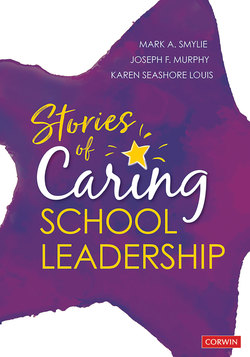Читать книгу Stories of Caring School Leadership - Mark A. Smylie - Страница 23
На сайте Литреса книга снята с продажи.
Explanations of Outcomes
ОглавлениеThere are three general explanations for how and why caring may lead to these outcomes. The first focuses on psychological mechanisms triggered by caring. Attachment theory suggests that positive social relationships—in this case, caring relationships—promote feelings of safety, security, and comfort through the mediation of threat and stress. These emotional states are important preconditions for exploration, facing stress and uncertainly, risk-taking, and engagement in learning. Self-determination theory suggests that for persons—children and youth in our case—to become motivated, needs for relatedness, competency, and autonomy must be addressed. Adults can meet these needs through caring, providing clear rules and expectations, and giving children freedom to make their own choices. If these needs are met, children will be more confident and motivated to engage in learning activities. Consequently, they will learn more and achieve at a higher level.
A second explanation comes from logical arguments that link different factors related to caring found in theory and research. For example, care and support received by students have been found to be related to student affiliation and sense of belonging in schools and classrooms. Care and support have also been found to be related to students’ sense of competency and self, notably academic self-concept and self-efficacy, among other positive psychological states. Care and support are also related to student motivation to learn and academic engagement. Through these intermediary outcomes, care and support—along with academic rigor, challenge, and press—promote social and academic learning. In short, caring social relationships power up certain psychological states of students, which deepen engagement—and that, in turn, fuels social and academic outcomes.
A third explanation is that caring may promote actions that provide tangible provisions and services to address the needs and interests of others. As such provisions and services are provided, benefits may accrue. For example, out of caring by a teacher or principal, a child may receive eyeglasses that help them see better in class, become more engaged in learning activities, and be more successful academically. Out of caring, a principal may initiate an antibullying program, which increases student physical and psychological safety and promotes engagement and learning.
Of course, these several explanations can be bound together to provide a robust understanding of how caring works. An important additional point is that the outcomes of caring are best understood in terms of the totality of caring—the systems of caring—that persons experience across settings, including family and friendship networks, schools, churches, and other institutions. Histories of caring or noncaring relationships and experiences are important also. Systems of caring are dynamic, and their elements likely influence each other. For example, while the close relationships students have with family, teachers, and close peers may affect them most, relationships with other adults in extended families, schools, and communities and with other peers will also have an effect. Elements of a system of caring relationships may be differentially strong, weak, or absent for different students. Caring may be particularly strong for some students in family and community but weak or absent in school—or vice versa. The strength of caring in some relationships may compensate for weakness in others. Again, it is the totality of caring that is important.
Caring can have important benefits for the ones caring—in our case school leaders as well as teachers and other staff. It can lead to joy and personal and professional satisfaction and fulfillment. It can increase self-esteem, motivation, agency, persistence, and overall mental health. These positive outcomes can, in turn, enhance the prospects of ongoing and deeper caring. The experience of caring can lead to more caring as it satisfies a sense of personal and professional calling. It can propel a virtuous cycle of caring.
